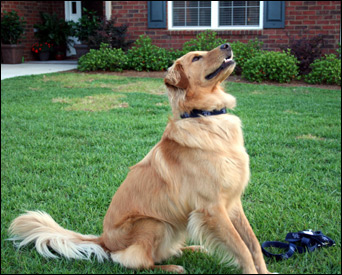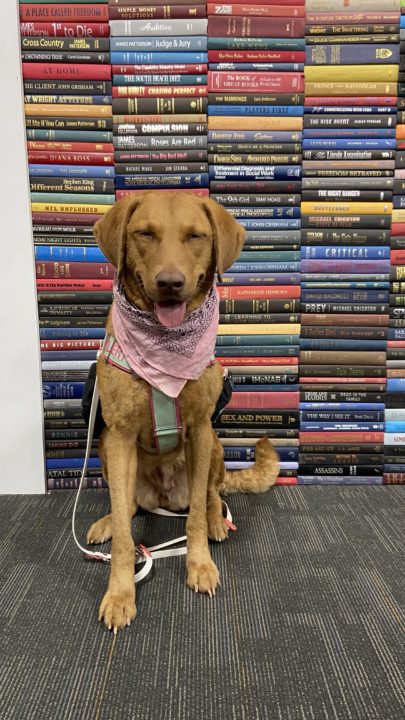admin
Betterdogplayer
Other Links
Preventing aggressive dog behavior!
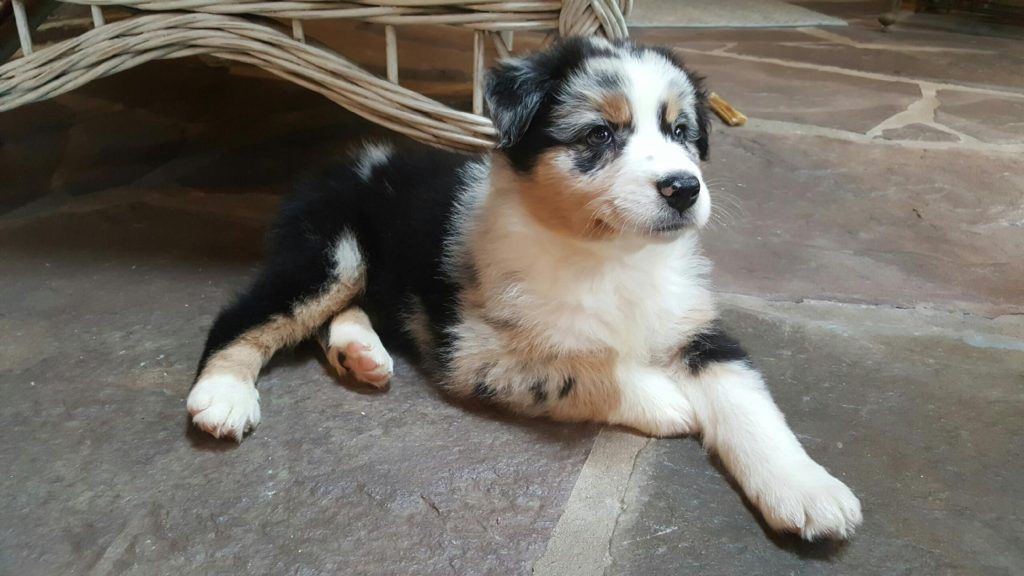
I’ve been training dogs professionally since 1984; from canine police dogs to handicap assistance, and everything in between.
A common question that I asked is what are a few simple things that I can do to prevent my puppy from growing up to be an aggressive dog.
Aggressive dogs fall into many categories. There is people aggression, aggression toward other dogs/animals, and guarding resource aggression, such as food, water, or toys.
If you have a dog that is displaying aggressive behavior, you need professional training from a trainer who understands and regularly trains and resolves aggressive behavior in dogs. If you are in our coverage area or you are interested in virtual lessons, I’m your man! If not, you should seek out trainers who have experience in protection training. When working in protection training, you have to understand and control aggressive behavior. Any trainer attempting to deal with aggressive behavior who lacks that experience will come up short in resolving your goals.
So let’s get started with prevention! A perfect analogy would be don’t let a teenager hear the word no for the first time in their life when they’re 16. This is very similar to training a dog. Your dog needs rules to follow!
Establish and maintain steadfast rules. Rules that your puppy follows not just because you’re holding a treat, but because it recognizes you as the pack leader!
Teaching your puppy to hold and maintain a sit stay for 30 seconds to a minute in front of a full bowl of food helps establish, in your puppy’s mind, that you control the food.
Having your dog sit and stay in front of an open doorway before being allowed to leave the home is another excellent reminder that you are in charge. Your dog should be able to do this without the use of a treat. Teaching your dog that jumping on you and your company is another reminder that you maintain and police the rules.
When beginning training with a dog, they tend to display demanding behavior, expecting to be pet at their desire. I have also seen dogs who bark continuously at their owner for attention. You have to ask yourself, “Do I want my dog to behave in a pushy, assertive manner?” You should establish patience with your dog for your attention, and never respond to an assertive dogs’ insistence that you follow their rules.
Training your dog is essential, and the type of training you choose is critical. If you have a dog with a dominant personality and a drive to insist that you follow his rules then it’s important that your training not consist of a singularly and consistent method, such as treat training.
There is one member of a dog pack that can cause all other members of the pack to relinquish food. This pack member is the pack leader. In some dogs the use of constant treats and bribery-based training, usually food reward, can lead your dog to believe that he’s commanding you to relinquish the food. If this is the main method of training for a dominant puppy, he is learning that he is the pack leader!
Aggression with dogs prevention.
Socializing your dog is critical. At the earliest age possible you should be socializing your dog with other dogs. However it’s important that you scrutinize the other dogs you’re socializing your dog. Bad experiences in a puppies life cancer lifelong fear, which leads to aggression patterns. Be careful while socializing your puppy and try to ensure that no other dog is giving your puppy a traumatic experience. If it anytime you feel that your puppy is stressed and not enjoying the socialization with another dog you should in essence scoop him up and remove him from that situation.
Equally important is that immediately following this incident try to socialize your puppy with a dog that does not cause stress.
Leash Puppy Training
I’ve have been training professionally in Charlotte North Carolina since 1989. Training puppies to walk on a leash for the first time, I do literally every week.
Repetition and Patients
First and foremost realize that each dog takes to the leash at a different pace. Some dogs take to the leash quickly with no fuss. While others feel the leash and start rolling on the ground and screaming murder. Taking your time is the mindset you should set each time you start with the leash training. Remember that a dog fighting the leash is more likely “fear” of the trapped feeling some puppies feel, with the control of the leash.
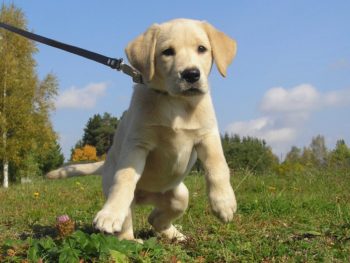
Puppy leash training
Training Leash and collar:
Start with a flat collar and a 6-foot leash. (Leather, Nylon Webbing or Biothane) Some treats your puppy loves like life abundance treats. An open area outside, with grass and other distractions.
Get in puppy’s head.
Before starting leash training you should consider what the leash means to your dog.
Example #1 – Your dog enjoys a yard with lots of freedom and never spends time in a small room of crated area alone. To this little guy, the leash represents a loss of freedom and control.
Example #2 – Spending time in a crate or small room alone regularly. The yard is not fenced and you must take your dog out only on a leash for leash laws and or his safety. To this pup, the leash represents freedom from the small room and or crate and exploration of the yard.
Prior to starting the leash training:
First, make certain your dog’s collar is fitting very snug. Dogs learn a little head flip that sends the collar over their head very quickly. it needs to be snug enough to not allow three fingers under your dog’s collar with the collar is placed at the top of his neck. Making sure he is not choking with the collar in place.
Second, isolate your dog from family and yourself for at least 30 minutes. Also, select the time for training to be just before and meal, we want him a little hungry.
Third, allow for at least 15 minutes for each training session.
Time to start training your puppy.
First, each time you approach your dog’s confinement area have the leash in your hand. When you start to remove him from his restricted area place the leash on him prior to allowing him to exit that area. occasionally approach his restricted area without the leash ignoring your puppy and not letting him out. it will not take long for your puppy to associate the leash in your hand with his freedom.
Second, Carry your puppy to the open doorway or the edge of the grass outside. Place him on the ground with the leash in your hand. Follow him around the yard while he is exploring. Maintain a leash lose most of the time. Occasionally let him feel the tension on the leash for brief moments at a time. 1 second of slight drag as he is driven to explore a scent. release the drag or pressure offer verbal praise or a treat or both and follow him once again creating a little drag on the leash. After a few trips outside try veering to one side of puppies intended path just slightly. Once in a while when your puppy seems to notice the leash and is not struggling to get free give him a treat.
Third, use members of the family to stand apart in the yard. The leash is then used to guide your young dog to each family member, they, of course, offer physical affection and treats each time he approaches them. Don’t let him pick which person.
If all else fails:
if he panics and freezes use a treat to lure him around the yard with the leash dragging the ground. After a few treats pick up the leash and apply a little bit of pressure to the leash as you hand him a treat.
In conclusion:
Proform steps one and two a few training session before moving on to step three. Your dog thinks the only way he is leaving the restricted area in on the leash. The leash also gets him out of the house into the grass where he loves to Relieve himself and explore. Tention on the leash means follow my guidance and your gonna get attention from the family and treats.
Mark Thompson
Dog Training In Your Home
Charlotte, North Carolina.
704-573-3647
Place Command Benefits
Place [go to your bed] is an extremely useful command.
The obvious benefits include having your dog place: when company comes over, during dinner, while kids are doing homework and any other time that you need your dog out of the way and not underfoot.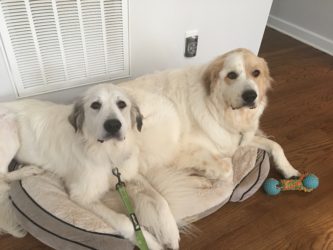
The less than obvious benefits include: during housebreaking the place command limit your dogs access to the room and/or house. Once your dog understands that he’ll be spending time on place on a regular basis he will choose not to urinate or have a bowel movement in that area. 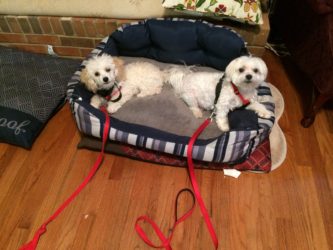 Please also teaches your dog to self control his or her energy level. When we reward a dog during the place command we’re not just re-warding their location. We’re also rewarding the calm state of mind that a dog inners while maintaining a long-term place. A few other benefits are when your dog learns to hold place for an hour they do so out of respect for your authority. But there are also learning to not be clingy and they’re learning some emotional independence.
Please also teaches your dog to self control his or her energy level. When we reward a dog during the place command we’re not just re-warding their location. We’re also rewarding the calm state of mind that a dog inners while maintaining a long-term place. A few other benefits are when your dog learns to hold place for an hour they do so out of respect for your authority. But there are also learning to not be clingy and they’re learning some emotional independence.
Dog trainers tip: occasionally of treats on your dogs pillow, while here she is not in the room. When they come back in the room and discover their little treasure. They start to associate the pillow with getting rewards.
Puppy Training Charlotte North Caolina
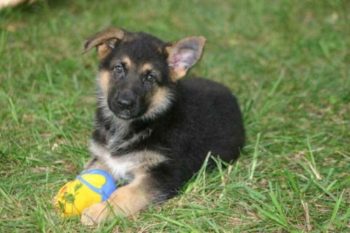
Puppy Training
What is the best age for training my puppy?
I’ve been training dogs professionally for 33 years, this has to be one of the most common questions that I get. The fact of the matter is that all dogs of any age can learn new behavior. However it is far easier to shape behavior in a younger dog .
Puppies start forming habits at 49 days (seven weeks) it’s been my experience the best time to start training your new puppy is at eight weeks old.
I want to stress that older puppies do excellent in training. The younger you start the easier it is to shape your puppy into a great family pet.
Dog trainers Tip of the Day: Supervision
Supervision-early on in training, keep an eye on your new little rascal. Puppies are inquisitive, supervision is the cornerstone of a great deal of the procedures that I use in training.
Examples: When your puppy makes good choices on what to investigate or chew. Take advantage of the moment and reward this behavior. Initiate physical praise and petting when your puppy interacts with toys. When your dog makes bad choices, redirect his attention back to his toys. Remember Puppies are very curious, supervision is the corner stone of training a puppy.
Buster Pet Therapy dog
Busters training is almost complete. He’s one of the largest pet therapy dogs that I’ve worked. He tipped the scale’s at 159 pounds. Busters biggest problem to overcome, when he sees another dog he just wants to go play… He used to not notice he was dragging his mom practically flying through the air… he’s learned if you wants to interact with that dog he has to be calm and maintain a loose leash at all times..
